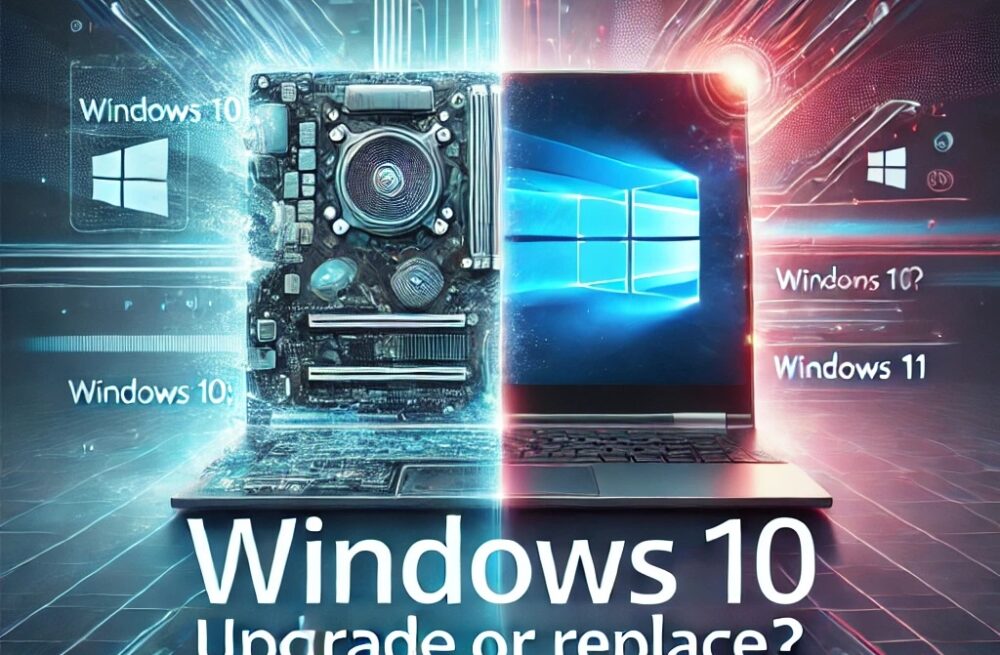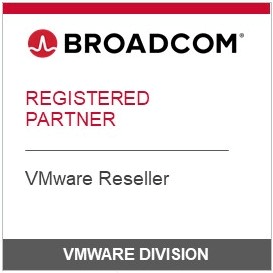Windows 10 is at End of Life – Should You Upgrade or Replace?
With Windows 10 support officially ending in October 2025, it’s time to make a decision. Will you upgrade your existing devices to Windows 11, or is it time to invest in new hardware?
Here’s how to determine the best path forward based on compatibility, performance, and long-term value.
Step 1: Check If Your Hardware Can Handle Windows 11
Windows 11 has strict system requirements to ensure security and performance. Key requirements include:
- A compatible 64-bit processor (1 GHz or faster, 2+ cores)
- 4 GB of RAM (We recommend an absolute minimum of 8 GB, and 16GB or more for any new purchases for the best performance)
- 64 GB of available storage (We recommend a minimum of 256 GB of storage, or more if your company uses all cloud based applications)
- TPM 2.0 (Trusted Platform Module)
How to Check Compatibility
- Use Microsoft’s PC Health Check tool to quickly assess compatibility.
- Manually review your device’s specifications if needed.
Outcome: If your system doesn’t meet the requirements, you’ll need to upgrade components or consider replacing your device.
Step 2: Consider the Age of Your Device
If your computer is 5+ years old, it may struggle with Windows 11. Even if it meets the requirements, older machines often experience slower performance and hardware limitations. They are also more likely to suffer unexpected hardware failures. In addition, firmware updates may no longer be available from the manufacturer exposing you to additional security vulnerabilities! We recommend replacement of all devices older than 4 years for the best operation in a business environment.
When to Replace Your Device:
- It’s nearing the end of its lifecycle.
- Upgrading components (RAM, storage) won’t significantly boost performance.
- It poses security risks due to outdated hardware and firmware.
- The manufacturer is no longer creating firmware updates for the device.
Step 3: Evaluate Performance and Productivity
Ask yourself:
- Speed: Is your computer slowing down essential tasks?
- Reliability: Are crashes or glitches becoming a frequent issue?
- Scalability: Can your current device handle future software and workloads?
When to Upgrade:
If your device is still running well and meets the requirements above upgrading to Windows 11 could be the most cost-effective option.
When to Replace:
If your current setup is causing slowdowns, upgrading won’t fix fundamental performance issues. In fact it may make those issues worse! Investing in a new machine will save you time, money, and frustration.
Step 4: Compare Costs – Upgrade vs. Replace
Upgrading Existing Devices:
- Lower upfront cost (if your system is compatible).
- Potential expenses for hardware upgrades (e.g., RAM, SSD).
- Short lifespan of this upgrade effort, if your machine is already at the 3-4 year old mark or older as it will need to be replaced shortly after the upgrade!
Replacing Devices:
- Higher upfront investment but better long-term value.
- Access to newer technology designed for Windows 11.
- Ability to ‘reset’ a 4-5 year lifespan window for that device.
Step 5: Future-Proofing Your Business
Newer hardware offers:
- Stronger security with built-in encryption and TPM 2.0.
- Faster processing speeds and improved energy efficiency.
- Better compatibility with modern software and accessories.
- Availability of new AI focused hardware.
If you’re planning for long-term stability, investing in new hardware now can save you from costly disruptions down the road.
Pro Tip: Get Expert Advice Before Making a Decision
Not sure if upgrading or replacing is the right move? An IT professional can help by:
- Assessing your current hardware and performance.
- Providing recommendations tailored to your business needs.
- Managing the transition to minimize downtime.
Let’s Make This Transition Easy
Still on the fence? Let’s evaluate your systems together.
Schedule a FREE Discovery Call to get expert recommendations and ensure a seamless transition to Windows 11.
Click here to schedule your FREE Discovery Call today!
Don’t wait until the last minute—be proactive and ensure your business is ready for Windows 11 before the October 2025 deadline.
We are here for you
Have a technology issue or question? Wondering if your current IT is really protecting you?
Setup a free, no obligation 15 minute chat with Darren by clicking below.
Tip! Be sure to ask Darren how to get a Cyber Risk Assessment at no charge!







